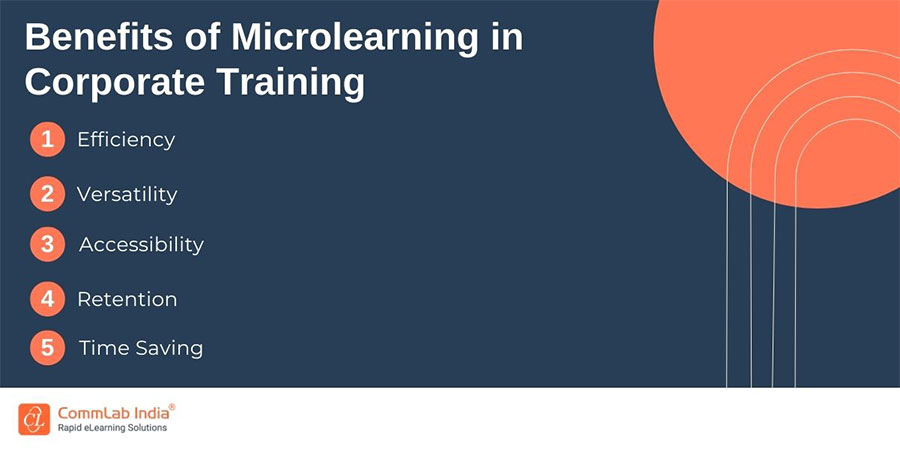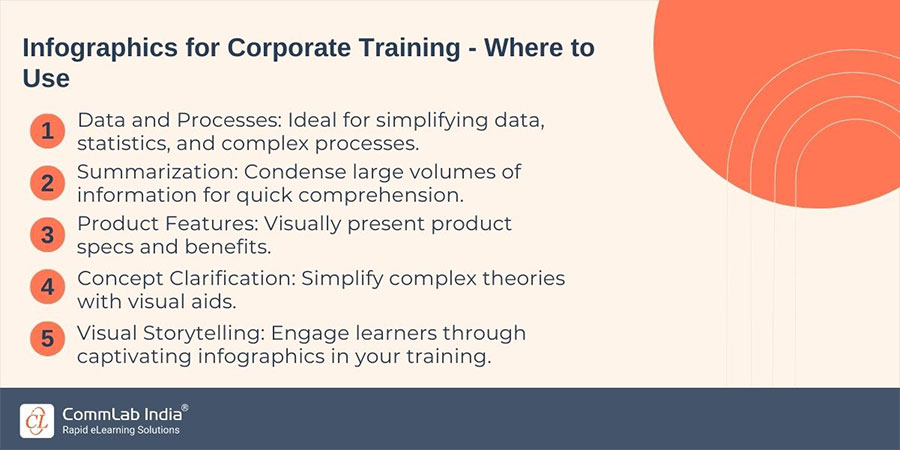When to Use Different Microlearning Formats in Corporate Training?

Microlearning is taking corporate training a notch higheer with its revolutionary, bite-sized approach to employee training and development. But before you dive headfirst into this new approach, it's crucial to understand when and how to utilize different microlearning formats.
In this blog post, we will discuss everything you need to know about implementing microlearning nuggets into your training programs for maximum impact and engagement. Get ready to transform your workforce with cutting-edge techniques that will leave them craving more knowledge!
Why is Microlearning the Best for Corporate Training?
Microlearning excels in corporate training for its efficiency and versatility. Its bite-sized format enables on-the-go learning, and its adaptability caters to diverse learning styles, ensuring high engagement and retention. In the fast-paced corporate world, microlearning is the key to effective training.
What Benefits Does Microlearning Offer?

- Efficiency: Microlearning delivers information in bite-sized chunks, making it easy for employees to learn quickly and effectively.
- Versatility: It accommodates various learning styles, ensuring high engagement and knowledge retention.
- Accessibility: Microlearning can be accessed on-demand, allowing employees to learn at their convenience.
- Retention: Short, focused content aids in better information recall and application.
- Time Savings: Microlearning reduces the time needed for training, minimizing disruption to daily work routines.
What are the Different Microlearning Formats (With Examples)?
Understanding the different formats available is crucial in ensuring that you choose the most appropriate one for your training needs. Let's now discuss the formats and when to use what -
1. Video-Based Modules
Video-based microlearning is ideal for conveying complex information or demonstrating step-by-step processes. It utilizes visuals and audio to engage learners, making it an effective format for topics that require a deeper understanding. This format is also perfect for mobile learning, as videos can be easily accessed and viewed on smartphones or tablets.
When to Use: Video-based microlearning is best used when you want to introduce new concepts or procedures, deliver product demos, or provide software simulations. It is also useful for reinforcing previously learned material in a more engaging manner. This makes it an ideal fit for delivering product training, and safety and compliance training.
2. Interactive Quizzes
Interactive quizzes are a popular form of microlearning that uses gamification elements such as scoring and rewards to motivate learners. They are excellent tools for testing knowledge retention and reinforcing key points from previous training sessions.
When to Use: Interactive quizzes are best used when you need to evaluate employee understanding of a particular topic or reinforce critical information before moving on to more advanced training modules. This makes it ideal for recap and review trainings, knowledge assessment, communication and language training, etc.
→ Download Now: Where Does Microlearning Fit in Your Learning Strategy [eBook]
3. Infographics
Infographics are visual representations of data or information that make complex concepts easier to understand. They utilize graphics, charts, icons, and minimal text, making them visually appealing and easy-to-digest.
When to Use: Infographics are most effective when your training content includes statistics, data, or processes that can be simplified and presented visually. They are also useful for summarizing large amounts of information in a concise and engaging format.

4. Podcasts
Podcasts are audio recordings that can be accessed on-demand, making them convenient for learners to listen to while multitasking. They are an excellent format for delivering bite-sized information, such as tips and tricks or industry updates.
When to Use: Podcasts work best when you want to provide quick bursts of information or updates on a regular basis. They are also ideal for employees who prefer audio learning or have limited time for training. This makes them the best fit for sales training, product update training, soft skills training, etc.
5. Interactive eBooks
Interactive eBooks combine text, images, videos, and interactive elements to create an engaging learning experience. They are designed for self-paced learning and can be accessed from any device.
When to Use: Interactive eBooks are ideal for longer online training programs that require learners to absorb large amounts of information at their own pace. They are also useful for providing comprehensive training on complex topics or new products/services. This makes it ideal for technical skills training, process training, employee onboarding, etc.
Wrapping Up
Microlearning has revolutionized corporate training with its bite-sized approach, offering maximum impact and engagement. In this blog, we explored the benefits of microlearning, including efficiency, versatility, and accessibility. We also delved into various microlearning formats – video-based modules, interactive quizzes, infographics, podcasts, and interactive eBooks – detailing when to use each one. With microlearning, you'll transform your workforce into eager learners.
Ready to harness the power of microlearning? Learn more about "Microlearning and Where Does Microlearning Fit in Your Learning Strategy?" in our eBook.
Download Now!




![Unlocking Custom eLearning Excellence with the Right Tool [Infographic]](https://blog.commlabindia.com/hubfs/blogs/custom-elearning-tool-selection-infographic.jpg)
